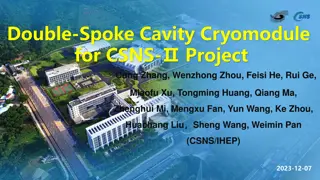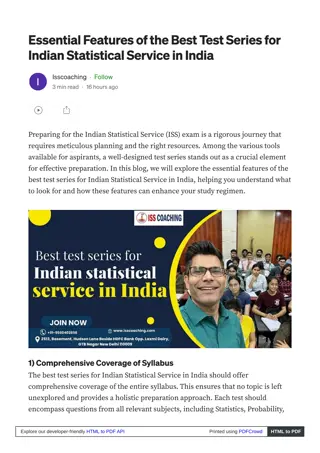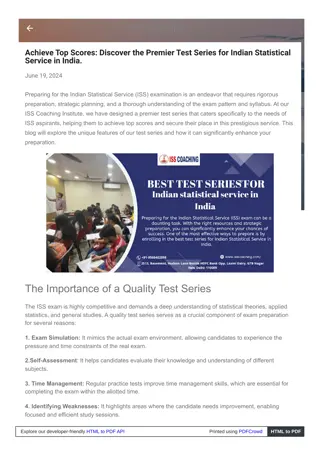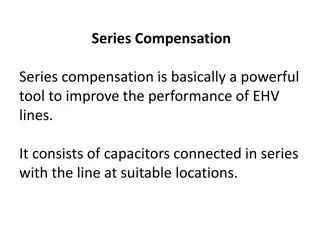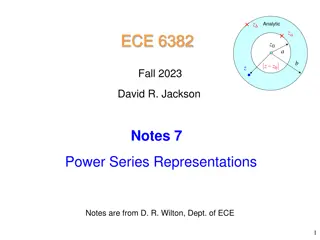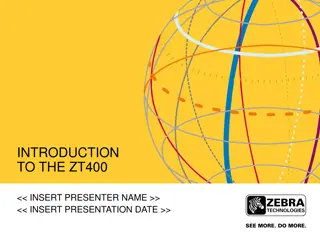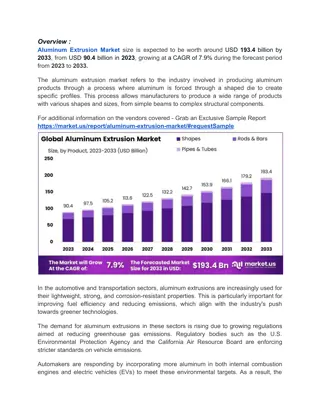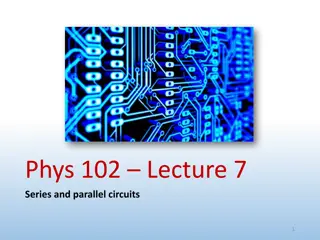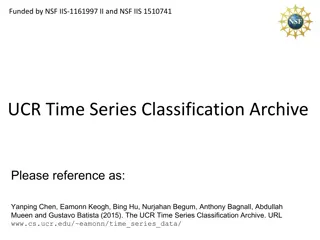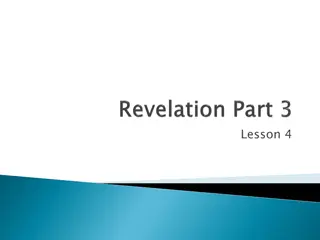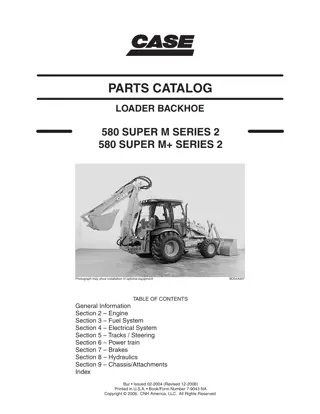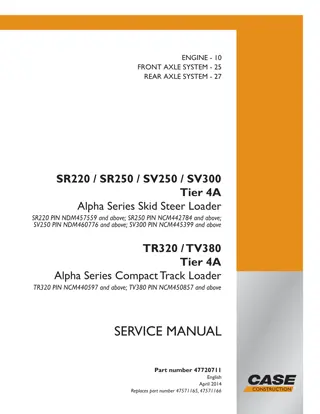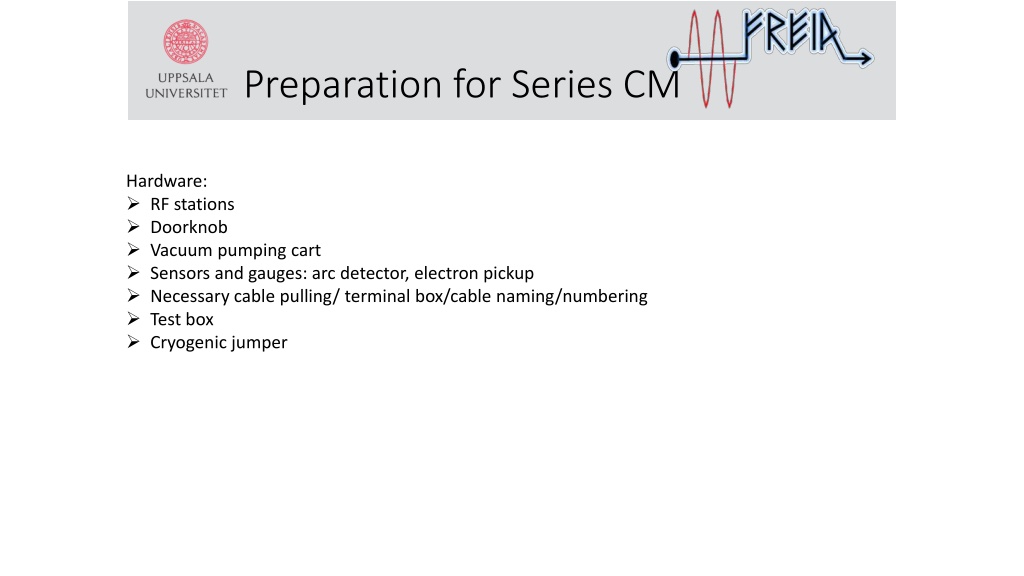
Preparation for Series CM Hardware and Maintenance
In this detailed document, preparations for the Series CM hardware including RF stations, doorknob dismounting, pumping carts, sensors, and gauges are outlined. Issues with RF station components are diagnosed and maintenance steps are suggested for optimal performance. The document also covers necessary cable pulling, terminal box implementation, and testing procedures. Additionally, insights on cryogenic jumpers and equipment calibration are provided for efficient operation.
Download Presentation

Please find below an Image/Link to download the presentation.
The content on the website is provided AS IS for your information and personal use only. It may not be sold, licensed, or shared on other websites without obtaining consent from the author. If you encounter any issues during the download, it is possible that the publisher has removed the file from their server.
You are allowed to download the files provided on this website for personal or commercial use, subject to the condition that they are used lawfully. All files are the property of their respective owners.
The content on the website is provided AS IS for your information and personal use only. It may not be sold, licensed, or shared on other websites without obtaining consent from the author.
E N D
Presentation Transcript
Preparation for Series CM Hardware: RF stations Doorknob Vacuum pumping cart Sensors and gauges: arc detector, electron pickup Necessary cable pulling/ terminal box/cable naming/numbering Test box Cryogenic jumper
Preparation for Series CM RF station: ElEctrosy: RF power test up to 360 kW (measured externally) in August with two different tubes (HPA1: TH595 and HPA2: TH595A) RF power limited by the screen grid current of 400 mA in HPA1 Observation: Significant unbalance between HPA1 and HPA2, higher gain for HPA 2 than HPA1 Unnormal pulse behavior for G1 power supply Stable maximum output for half day One RF shunt down by unclear reason Maintenance: Try two TH595 tubes in Electrosys, the system is more balance but no improvement for the max output Check the G1 power supply and send back for factory diagnosis (what the latest state?)
Preparation for Series CM RF station: DB station: RF power test up to 400 kW (measured internally) in May (both TH595A tubes) Observation: No fine-tune of new tube in section 2 Stable maximum output for half day Maintenance: Fine-tune of new tube in section 2 Adjust R8 potentiometer for section 1 to improve Vg1 of section 1 (from -176 V around -200 V ) Potential risk of G1 power supply
Preparation for Series CM Doorknob Need to be dismounted before the installation of the coming series CM When and who will take care of it? Pumping cart Two pumping charts are applied in the 1st series CM? Any preparation for the second cart we have? Issue solve for the first cart? Sensors and gauges: arc detector Cabling, adaptor, mechanical support and read gauge, PLC Numbers of diagnostic sensors (arc detector) will be used? Mounting procedure of the arc detector support? Calibration of the pressure sensor/MKS? Second LHe level sensor to be connected to the PLC? Necessary cable pulling/ terminal box/cable naming/numbering Cable pulling has been done. The terminal box is implemented base on the series CM cable logic Cables are properly named and added into FREIA database Loop diagram is completed (to be constantly updated) and is added in FREIA drop PLC channels for heaters installed inside CM is documented Test box Will we get an official one from Orsay? cryogenic jumper The cryogenic jumper has been replaced before the series CM
Preparation for Series CM Software: LLRF upgrade LLRF2 has successfully upgraded and tested LLRF1 upgrade is on going CS-studio New version of CSS and new LLRF interface are in place EPICS New PVs are defined based on the series CM PID scheme Labview test interface upgrade All Labview interface are modified based on the new PVs Quench detection has been integrated into both test interfaces Tuner/piezo control program Need to be tested under the new CS-studio version Readout of shock sensors Need to be checked with Orsay
The list of minimun tests in some order of priority 1. 2. 3. 4. 5. 6. 7. 8. 9. 10. Stabilization of the CM for long-term operation 11. Onset and level of field emission 12. Multipacting Central cavity frequency Loaded Q Steady heat load Dynamic heat load for both cavities from 8 to 12 MV/m Q0 (calorimetric measurement) high than 1.5 e 9 at 9MV/m Reach gradient of 12 MV/m Tuning range of the slow step tuner Frequency shift due to cool down Stabilization of the cavity field with LLRF using both RF and piezo tuner compensation 6
To do list Before CM arrival: number item Person in charge 1 Get back and install G1 power supply for Electrosys Rolf, Tord 2 Test DB and Electrosys station to full power Rolf, Tord, Han, Micheal 2 Ask for shock senor reader preparation, test box, documentation Roger 3 Tuner control software validation Kjell 4 Dismount of doorknob Lars 5 Validation of vacuum pumping cart Lars 6 Overall check with the LLRF/software Han, Tor, Kjell 7 Cryogenic procedure Lars, Esat
To do list After CM arrival: number item Person in charge 1 Akira, Han Readout information of shock sensor and vacuum 2 Han, Akira Visual checking of CM 3 Cavity frequency at room temperature Han 4 Sensor/cable continuity (test box) Akira 5 Lars FPC and doorknob installation 6 Lars Vacuum pumping system installation 7 Calibration of the pressure sensors/MKS Konrad Anything else?


